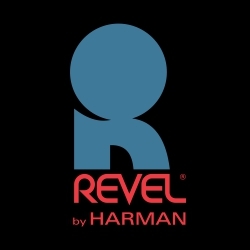It’s official: quality no longer matters and quantity does. And I don’t just mean the continued repetition of the observation that consumers will always prefer a big TV screen over a small one, even when the latter is offers a notably better picture.
I can understand that because, picture quality aside, there’s a functional difference between a big screen and a small one. You have to squint and strain to see a 21in screen versus, say, a 32in screen in the same sized room. Moreover, it seems from every demonstration I’ve ever attended that subtle difference in the quality of visuals (tint errors, slight loss of detail) seem far less offensive to most people than size considerations. The sole exception is the computer monitor, because you may be staring at it for hours at a time and at close range. And if anything shows up inadequacies, that’ll do it every time.
No, I’m talking about the importance of sound quality. It began with companies marketing mediocre wife-friendly mini-speakers with ‘hidden’ subwoofers, followed by the sheep-like acceptance of MP3, and the plastic crud which most people attach to their computers. But now I have hard evidence that features and gimmicks are to be preferred to sound quality, and the evidence appears in the April 2000 issue of Home Entertainment, a magazine which I always respected and thought knew better.
What’s rattled my cage is the article ‘Dolby 5.1 vs DTS’ by Justin Pledger. Before I proceed, note that I’ve never met Justin Pledger, who – for all I know – is a great guy, despite having a name which sounds like pseudonym. Hence, there is no element of vendetta here. But whatever his credentials, Pledger blatantly places as much value on features as sound quality, as his methodology shows.
Pledger assembled a collection of 10 DVDs available in both forms, including Saving Private Ryan, Antz, Daylight and the like. And before someone from Future screams about how the final verdict was DTS ‘91%’ and Dolby Digital ‘89%’, let’s look at the text before the article’s bottom line is used to decide the argument.
For those who haven’t heard DTS vs Dolby Digital, the sound quality is so superior in the former that only a Dolby shareholder could fail to hear the difference. Why? Because Dolby Digital uses far more compression than DTS. Even the usually cloth-eared computer press has noticed this, the genre’s one lone golden ear, Gordon Laing of Personal Computer World, noting in the May 2000 issue that DTS ‘boasts better quality than Dolby Digital by essentially not compressing the signal as severely.’ This one sentence, buried in the ‘Hands On’ section, is tantamount to a revolution, for the computer press has in no small way been part of the process that has tacitly championed mediocrity.
It doesn’t take a mathematical genius to realise that DTS’ lower compression means that it uses up more real estate on a disc. And although double-layer/double-sided discs are available, either time, costs or licensing considerations have forced the majority of DTS discs to appear on single-sided/dual-layer discs. Something had to go, and the result is that nearly all DTS discs are shorn of ‘extras’.
As far as lack of features is concerned, that’s been one of the biggest complaints levelled at Region 2 discs: most are missing them. But why? My complaints about Region 2 discs are the dearth of titles and the rip-off prices, and for a simple reason: most extras are a waste of time. Even if they’re worthy, like the documentary on The Exorcist, they’re not worth watching more than once. Voice-over commentaries? I mean, have you ever tried sitting through a movie with the director saying during a car-chase, ‘Here’s where we had a car chase’? In no way should they be deemed as important as the film’s sound quality.
More to the point, and I’m sure Pledger didn’t bother to contact DTS to find this out, when DTS licenses a film, they licence the movie and not the extras, the rights to which might belong to some other company. (DTS actually has little or no say in the print they receive, hence the 4:3 DTS releases of Liar Liar and The Shadow.)
So back to Home Entertainment. The cover line states ‘Surround Stand Off! Are imported DTS movies better than Dolby Digital?’ What I expected was a shoot-out about sound quality. What was delivered were points deducted because the ‘extras’ were missing; not once in the article does Pledger point out why DTS left off the features. Out of 10 discs, Dolby Digital tied or bettered five of the DTS versions. And yet in each case, the DTS version had the better sound, which means that the conclusions in favour of Dolby Digital were reached solely because of the extras.
Am I grumbling about bad journalism or warped priorities? A bit of both. I hope I’m not alone amongst the magazine’s readers when it comes to assuming that the cover promised a sonic contest; it said ‘Surround Sound Stand-Off’, not ‘Who’s Got the Most Extras?’ As for the priorities, well, Pledger obviously finds a few crappy out-takes and movie trailers more important than sound quality.
(Inside Hi-Fi, April 2000)






















